What are “Queer Landscapes?” Or even taken at its parts, what is “Queer” and what are “Landscapes?” Both words have multiple meanings, and together they multiply in their complexity.
According to Merriam-Webster’s Dictionary, the word queer can be an adjective, noun, or verb. Queer as an adjective is defined as:
- Differing in some way from what is usual or normal; eccentric, unconventional
- (a) of, relating to, or characterized by sexual or romantic attraction to members of one’s own sex
(b) of, relating to, or characterized by sexual or romantic attraction that is not limited to people of a particular gender identity or sexual orientation
(c) of, relating to, or being a person whose sexual orientation is not heterosexual and/or whose gender identity is not cisgender
(d) of, relating to, or being a person whose gender identity cannot be categorized as solely male or female
(e) of, relating to, or being a person whose gender identity differs from the sex the person had or was identified as having at birth - questionable, suspicious; sick, unwell
Queer as a noun is defined as:
- a person who is gay, lesbian, bisexual, pansexual, or otherwise not heterosexual; a person whose gender identity is nonbinary or differs from the sex they had or were identified as having at birth: a genderqueer or transgender person; a person who is not cisgender
And lastly, queer as a verb is defined as:
- (a) To consider or interpret (something) from a perspective that rejects traditional categories of gender and sexuality: to apply ideas from queer theory to (something)
(b) To make or modify (something) in a way that reflects one's rejection of gender and sexuality norms - to spoil the effect or success of (something); to put or get (someone or something) into an embarrassing or disadvantageous situation
The breadth of these entries confirms the word’s complexities, but for the purposes of this project, we will be using the verb “to queer” by applying queer theory to various landscapes(see definition of queer as a verb, 1. a., above). In doing so, we will be attempting to differentiate “queer” landscapes from “normal” landscapes (see queer as an adjective, 1., above).
Which brings us to our next question: What are “Landscapes?” Landscapes, for the purposes of this project, are landscape architectural projects—landscapes that have been designed or managed, to varying degrees. This project is speaking from an architectural design review perspective, where we critique a landscape’s form, materiality, and function.
Therefore, taken together, “Queer Landscapes” are landscape architectural projects that have been identified as queer by employing principles of queer theory, to start, as well as other criteria in the future . We are not necessarily identifying queer social, cultural, sexual, or historical landscapes or spaces—those that are used, loved, and inhabited by queer-identifying people. In addition, identifying landscapes as being queer, to us, does not require that they were designed by queer architects, landscape architects, etc. We argue that queer landscapes can feature queer design elements and not be designed by queer people, nor used by queer people, but they feature queer design elements.
To reiterate, this is the beginning of a much larger investigation, with scope beyond what is currently shown here. And we are just one perspective. We invite others to contribute to the project and expand our reach. For now, we are sampling a small subset of queer theory and of landscapes. We are admittedly limited in our era, geography, and perspective. This project has the potential to be an historical, global, and intersectional effort. This is just the beginning…
